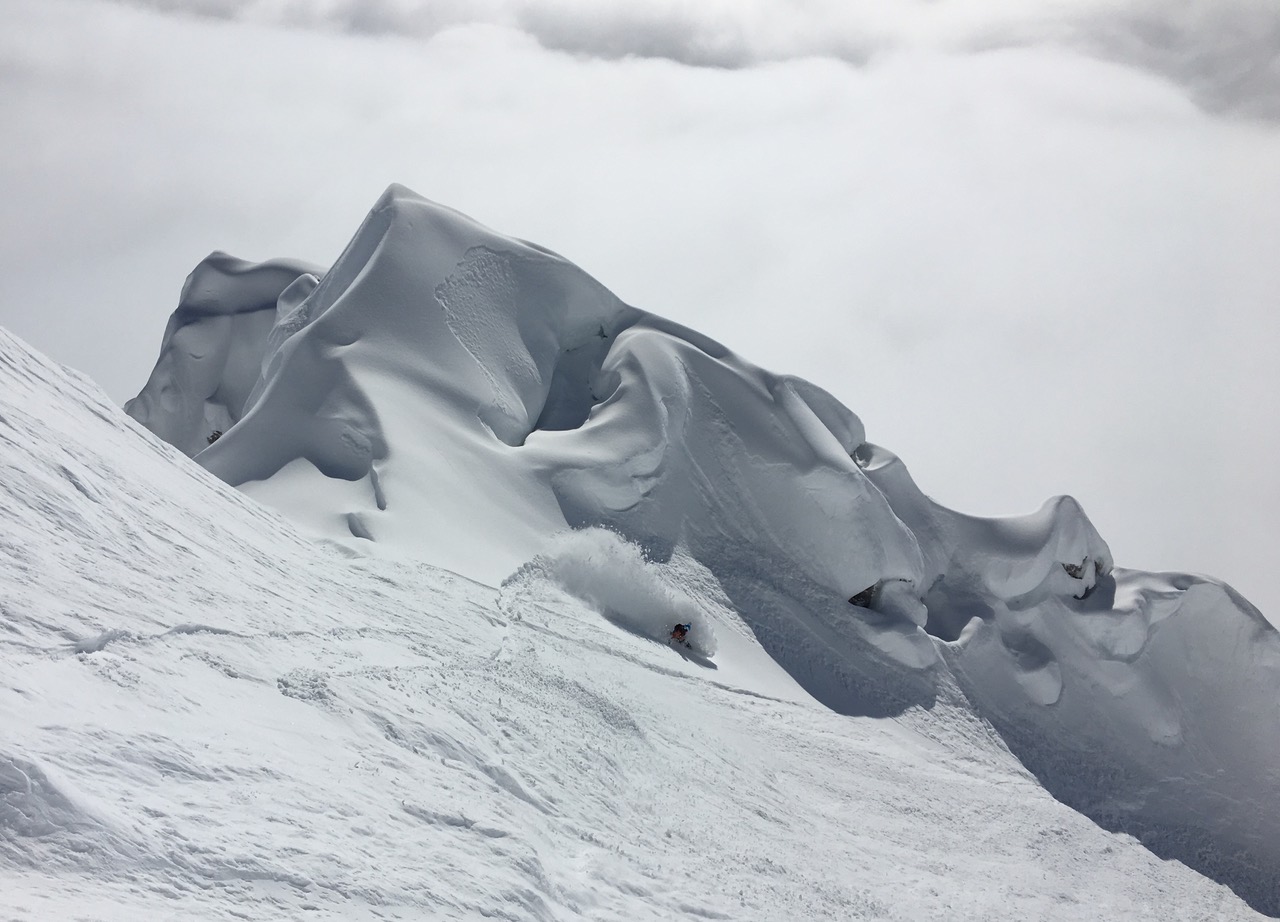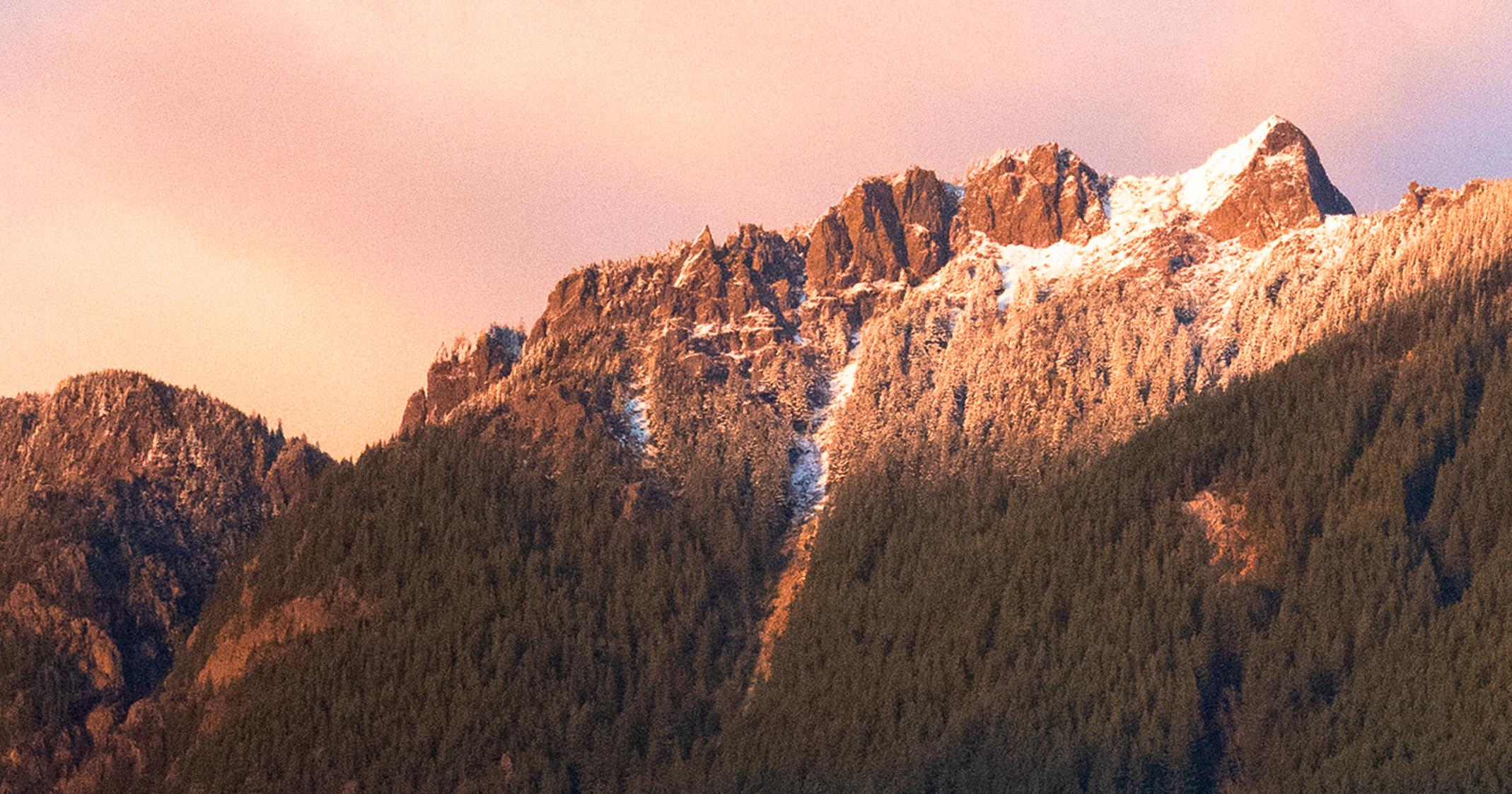Words: Kyle Hansen
Photos: Kyle Hansen and Brandon Huttenlocher
I’m guessing you’ve heard this before: this past winter was terrible. Most winters, I expect to be able to go snowboarding or splitboarding at Snoqualmie Pass every single day. It’s pretty much what I’ve scheduled my life around since high school. This winter, warm weather left us skunked: we were looking at grass on cat tracks in January. So when March rolled around, long after all the Northwest ski hills shut down, I took a five-week sabbatical to spend some time in a van with a couple good friends (Jay Hergert and Brandon Huttenlocher), in an attempt to salvage our winter.
Much to our delight, we found the snow we were looking for, and a heck of a lot more. From Revelstoke, to Banff, to the Kootenays, to Jasper National Park, we were able to find our way above the snow line and get fresh tracks just about everywhere we looked. Even in the worst season in memory, we were able to find the days that make this whole life pursuit worthwhile.
The full story of that trip will be out in some form later this fall. For now, I’m going to list here a couple of notes from my trip that might help you if you are interested in taking a similar trip in the future.
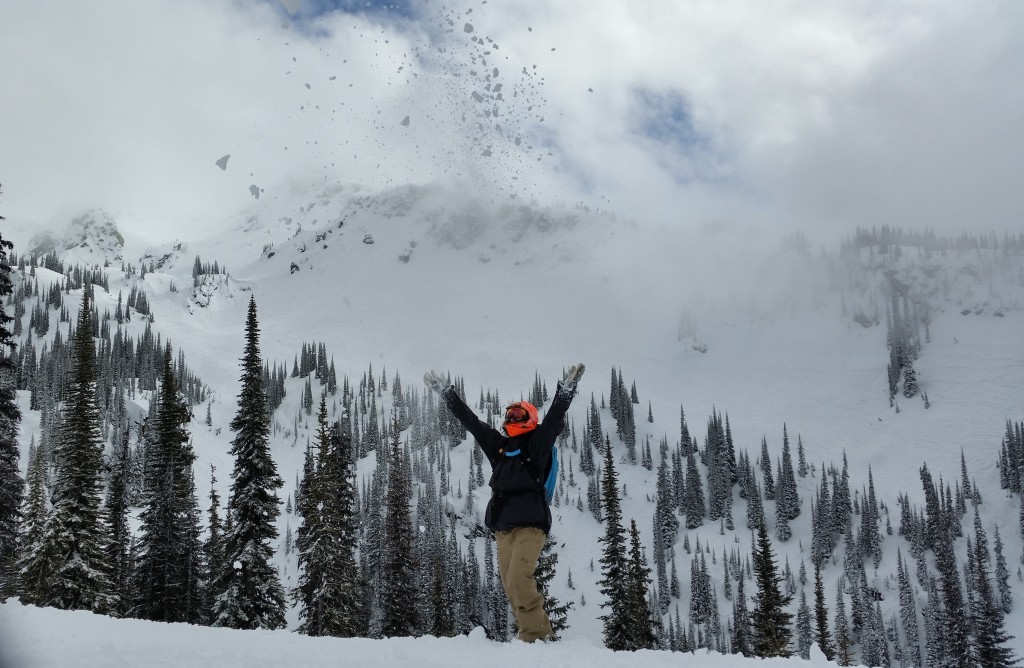
Budget ///
Okay, how much does a trip like this cost?
Jay and I spent $1950 US over five weeks. Brandon spent a similar amount, plus a couple very costly unplanned camera expenses. So we are looking at $1000 US each, for five weeks, including food, gas, car insurance.
We splurged and ate out more than we could have. Going out on the town and talking to the locals was more than worth the extra food and drink budget though. Locals in Revelstoke were more than happy to share the good spots with us.
You’ll notice pictures from a helicopter-assited touring trip—that expense, which would cost something like $1600 US, is not included in the above calculation. If you’re interested in doing a heli trip in the interior BC and don’t need a guide, Glacier Helicopters is the way to go. https://www.glacierhelicopters.ca/
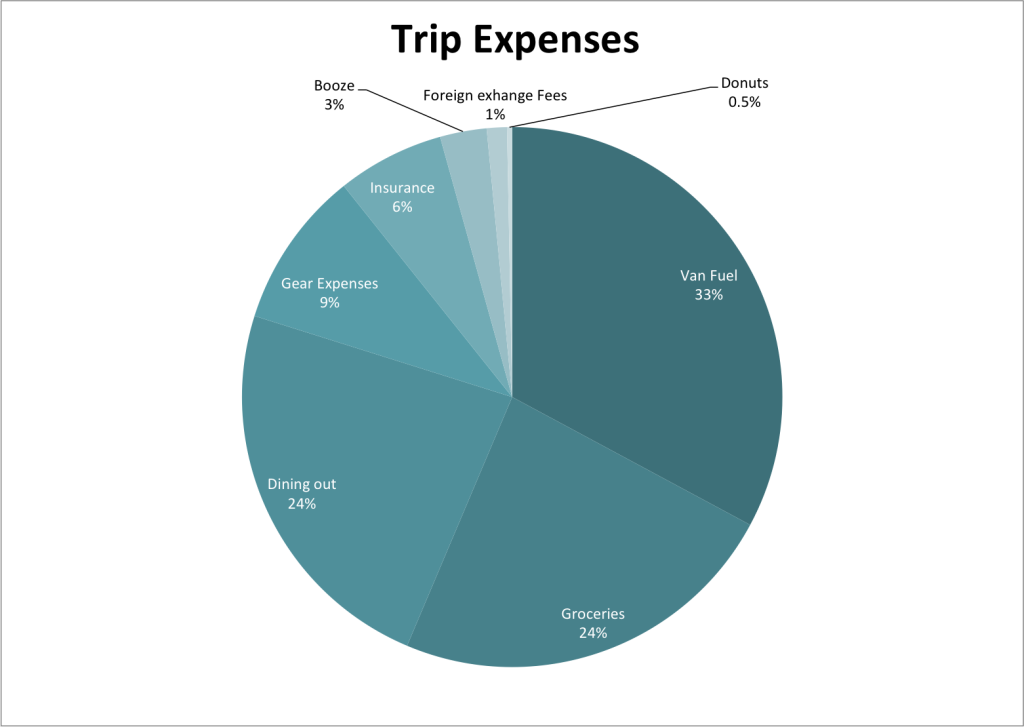
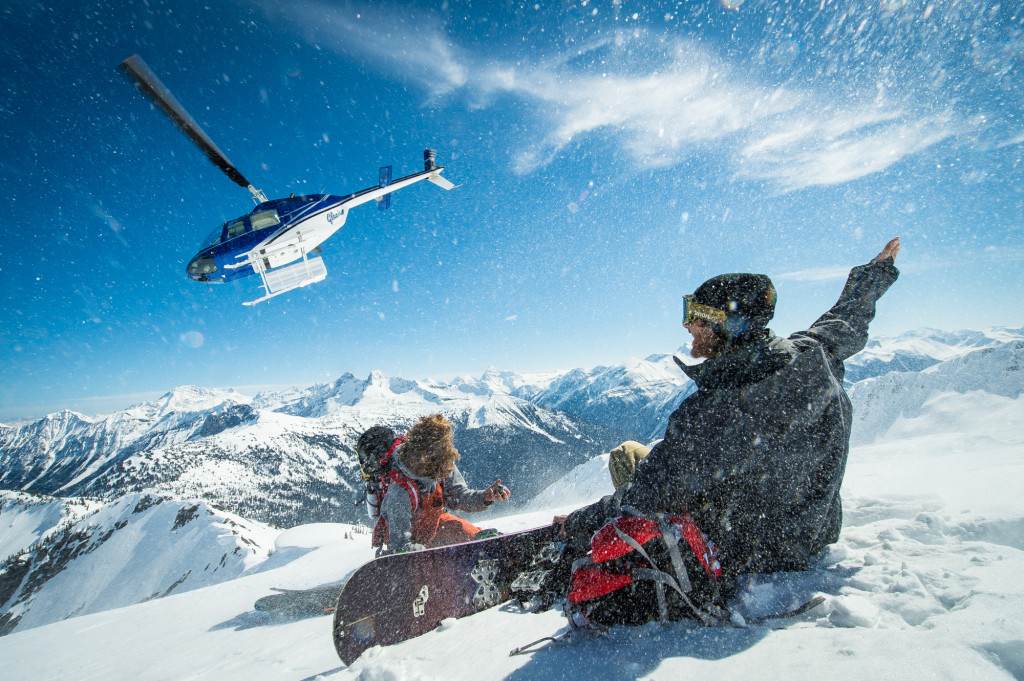
Photo: Brandon Huttenlocher
The van ///
We kind of lucked out here. Jay had previously set up his 2001 Ford Econoline van to live in, and kindly volunteered it for the trip. It had been parked back home out of service for a couple months, so we did have to put some time into changing the oil, and spent $80 getting it re-insured.
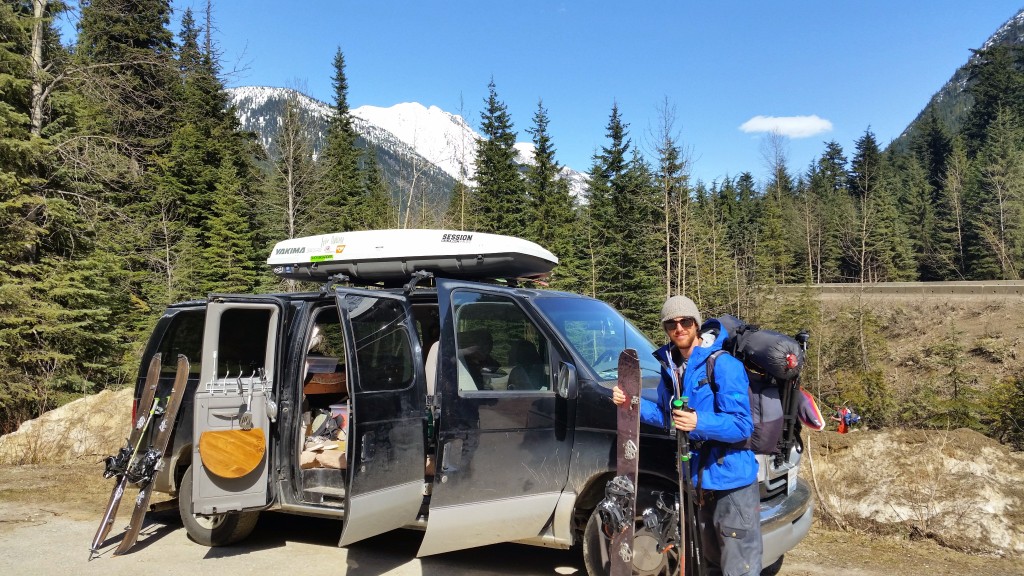
Jay slept in a raised bunk he built. Brandon and I fit lengthwise along the van, sleeping pads side by side, with our feet under the bunk. We had enough space to be comfortable, but just barely. Modular storage was key– a couple Tupperware bins from a department store made moving things around the van (call it changing over from drive mode to sleep mode if you want to make a cheesy splitboard pun) much smoother and easier.
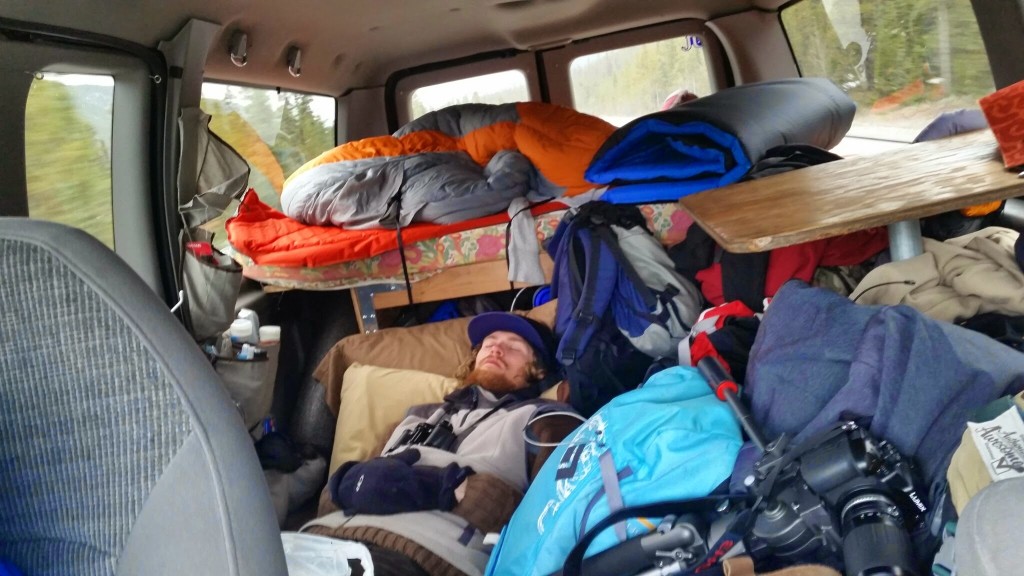
Mindset ///
I’ve long been a big fan of Frequency magazine. One article, in particular, contributed a lot to a mindset that helped keep us sane. After all— 5 weeks is a long time to live in a van with the same three people. I won’t spoil the whole thing, but I just want to share this excerpt from Nate Deschenes’s Switzerland: Saas Fe, St. Moritz and David Hasselhoff feature in Volume 10.1
“[speaking about how you can’t go in to a trip expecting to be able to control too much]… The result of this kind of travel is just going to places, not experiencing them.
What a location has to offer is determined precisely by what is there at the respective moment in time you pass through—no more, no less. If you can grasp this very simple concept, everything you are looking for just magically happens—often as you wouldn’t have ever imagined.”
For all the planning we did for the trip, the best moments came from just following the flow of what the area had to offer. Is that an invite to stay an extra week in Revelstoke? Sure! An invite to go to the S-Games, Revelstoke’s end of the season freestyle contest? Sure! Bloody Caesars and Poutine? Let’s go!
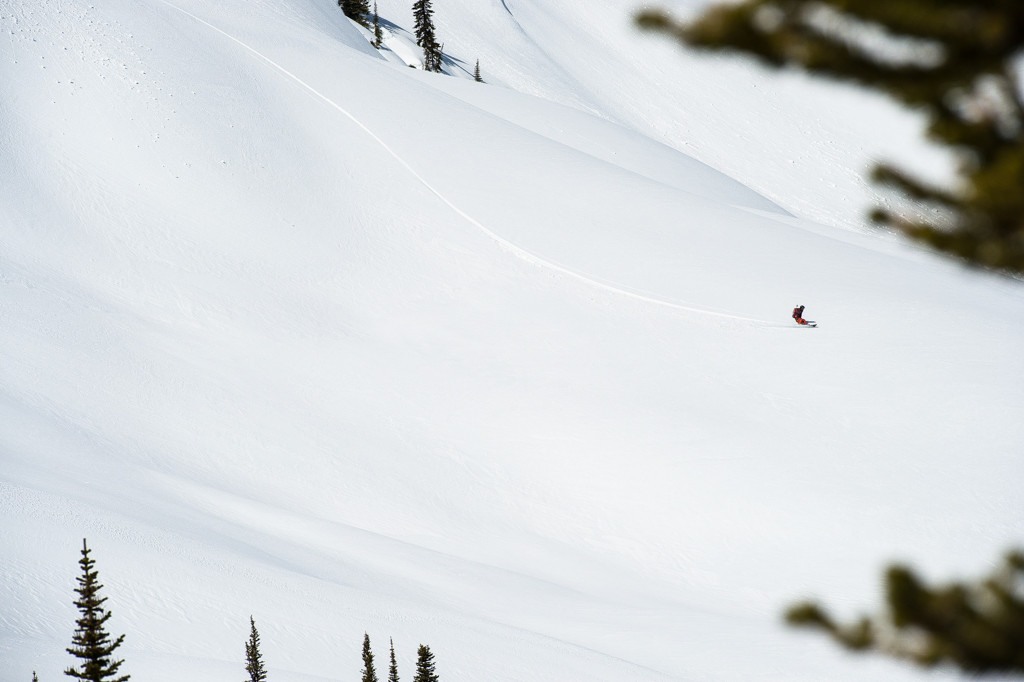
Photo: Brandon Huttenlocher
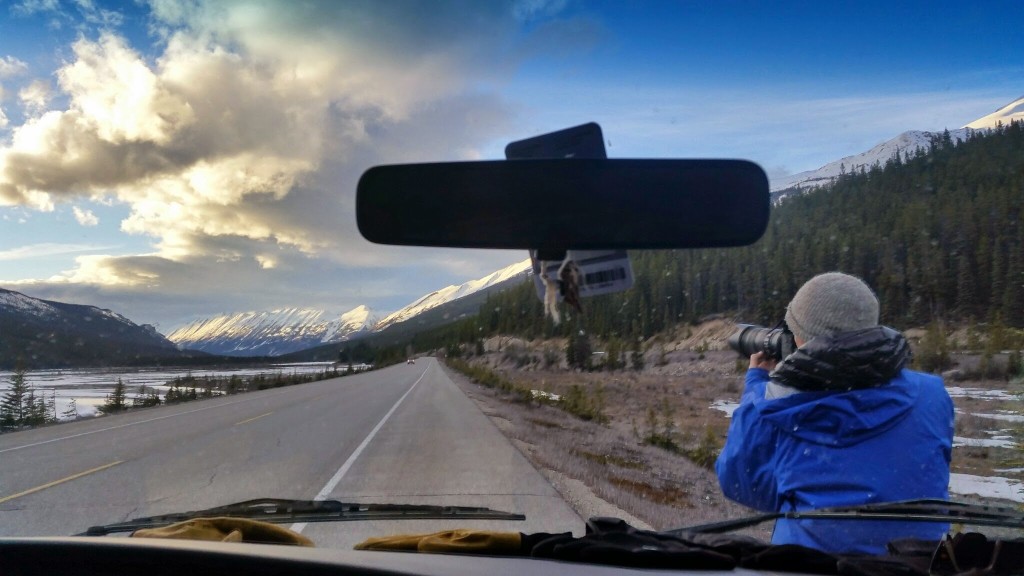
Gas ///
We picked the right year to take a road trip. With gas well under $3 USD per gallon, we were able to swing this trip on a lower budget than we otherwise would have. All told, we put roughly 6500 miles on that van. We probably would have driven less, had we not made some awesome friends in Revelstoke. The plan was to just park the van at a trailhead, but we ended up commuting from their house in town to the hill more often than we planned. That’s travel though—just roll with what chances you get. The extra time on the road was a small price to pay for showers, comfy beds, and good company.
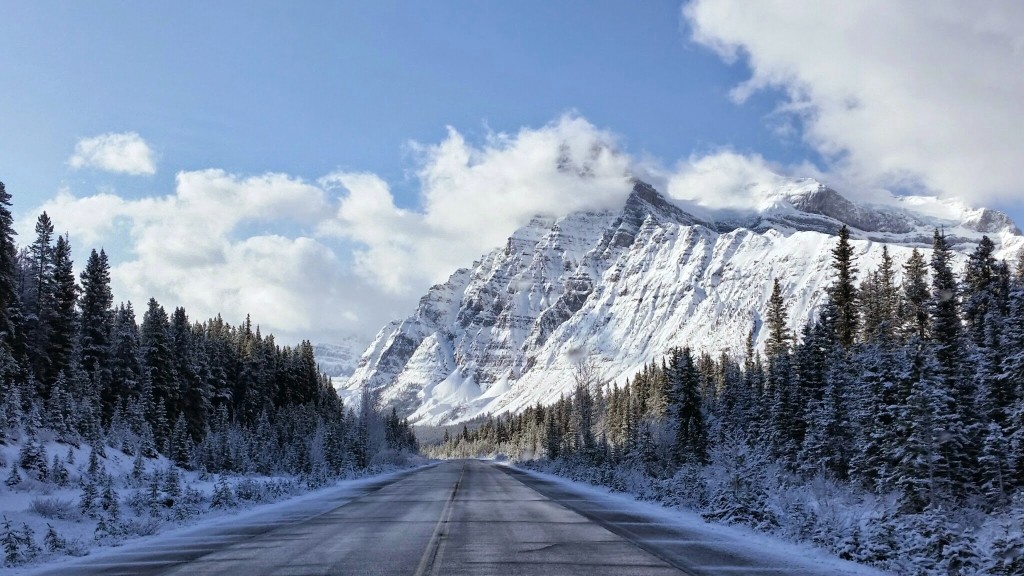
Lodging ///
No article about our trip would be complete with mentioning our friends at Valley Retreat B&B in Revelstoke. We met an awesome guy named Ryan, who has just finished a new Bed and Breakfast geared towards snowsports enthusiasts. It’s close to the resort, super comfy, and Ryan cooks some mean Canadian Bacon with pancakes. Canadian hospitality at its finest. I’m still not sure how we lucked out and met such awesome people in Revelstoke, but I’m really thankful we did!
If you are ever looking for a place to stay in Revy, check it out! http://www.valleyretreat.ca/
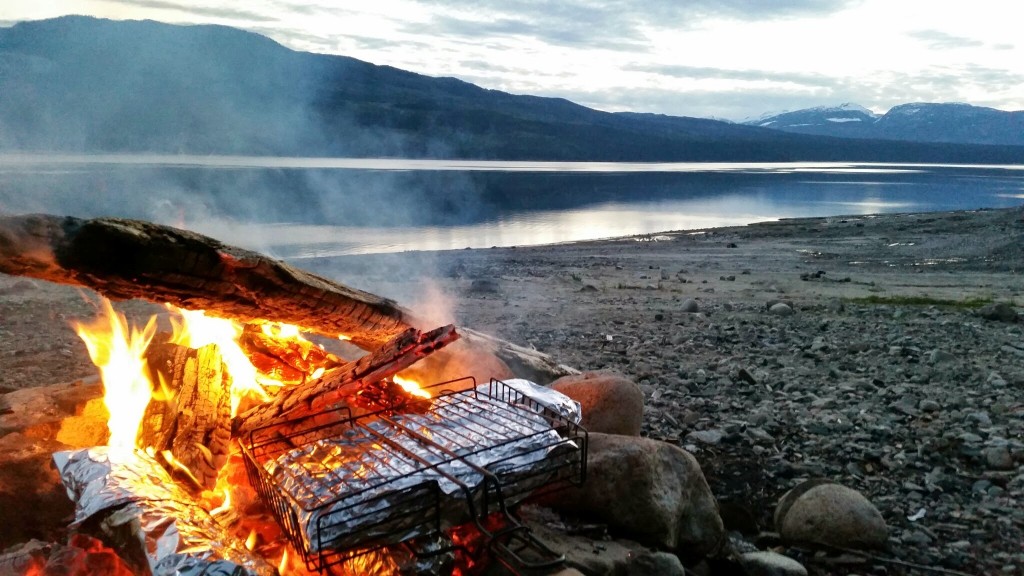
Area ///
Where did we go?
Our trip took us from North Bend, Washington to Revelstoke, BC. We then moved on to Lake Louise, Banff, and Jasper National Park.
We chose the area somewhat randomly:
- We figured there had to be snow somewhere, and it was probably north of us
- Brandon had heard great things about the Icefields Parkway (and boy was he right—it’s the most beautiful drive I’ve been on)
- The snow/avalanche reports looked manageable
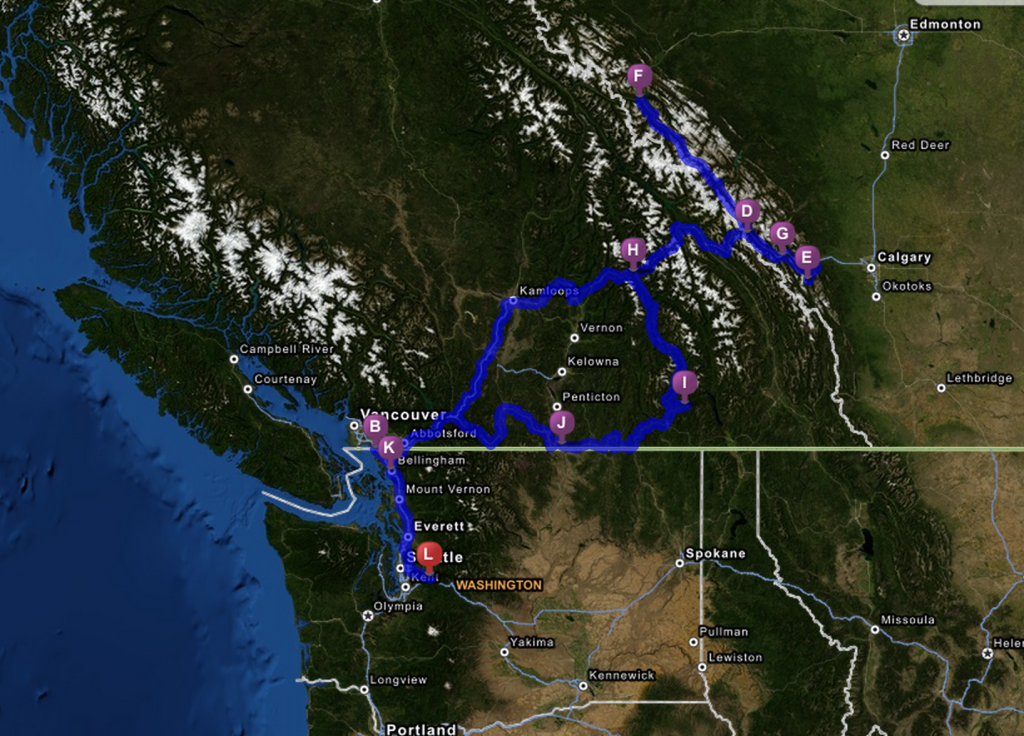
How did we figure out where to snowboard?
The biggest challenge of heading somewhere new to ride in the backcountry was by far finding locations that offer good, safe riding. We approached this with a couple resources
- avalanche.ca (Canada’s avalanche forecasting resource is an absolute gem. The map view with recent trip reports is very useful.)
- guidebooks
- drinking with locals
- google earth
- noaa.gov
- reddit.com/r/spliddit (I got some advice from a redditor in the Kootenays on current trail conditions. Thanks spliddit!)
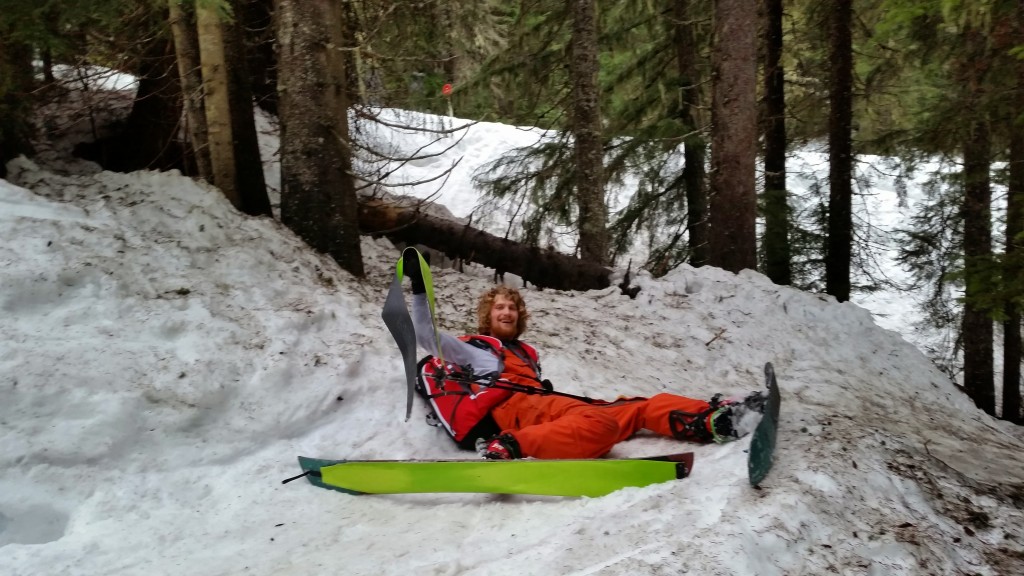
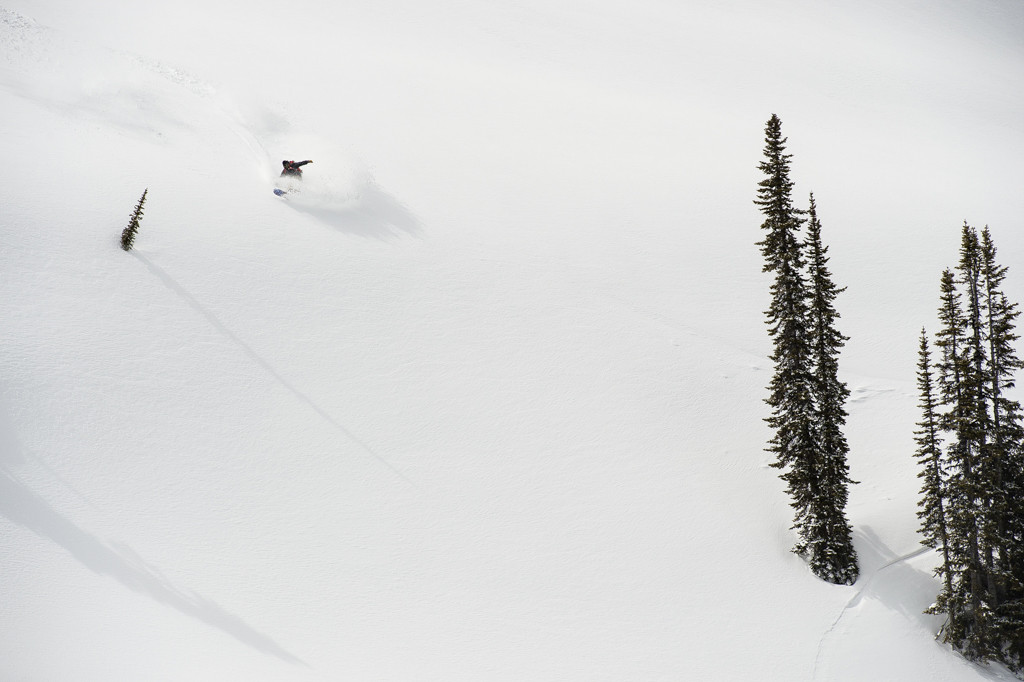
Photo: Brandon Huttenlocher

